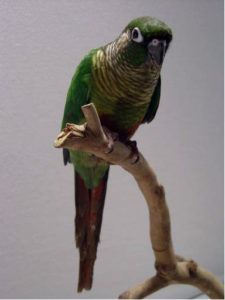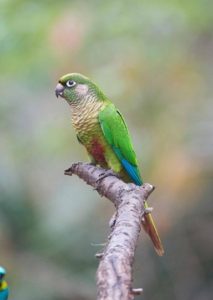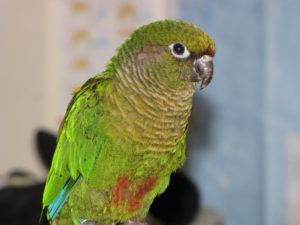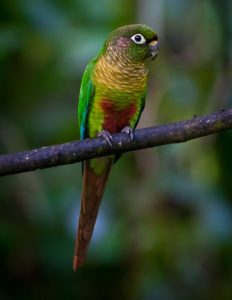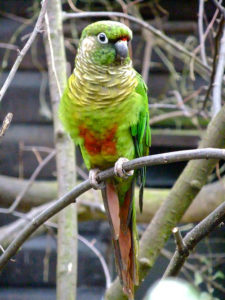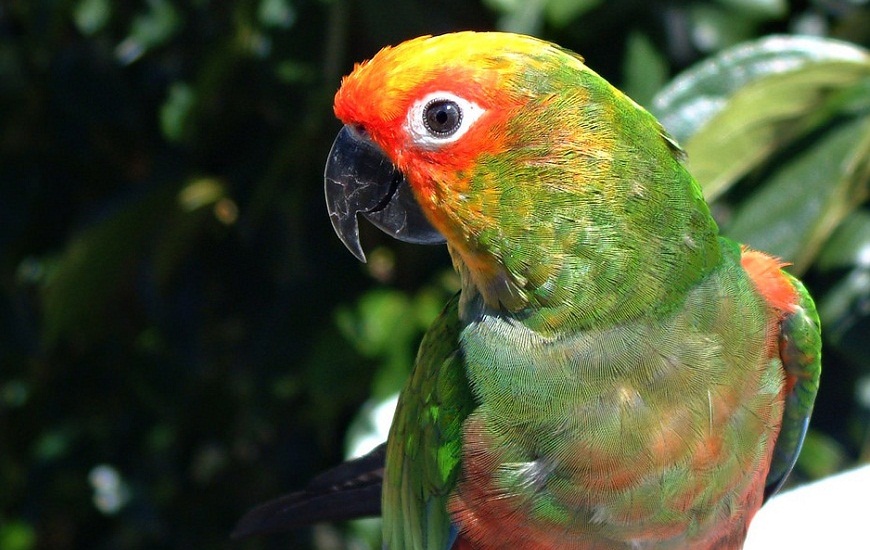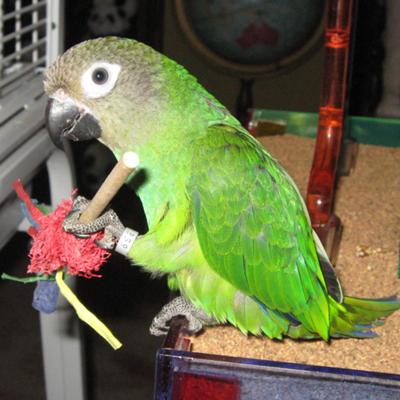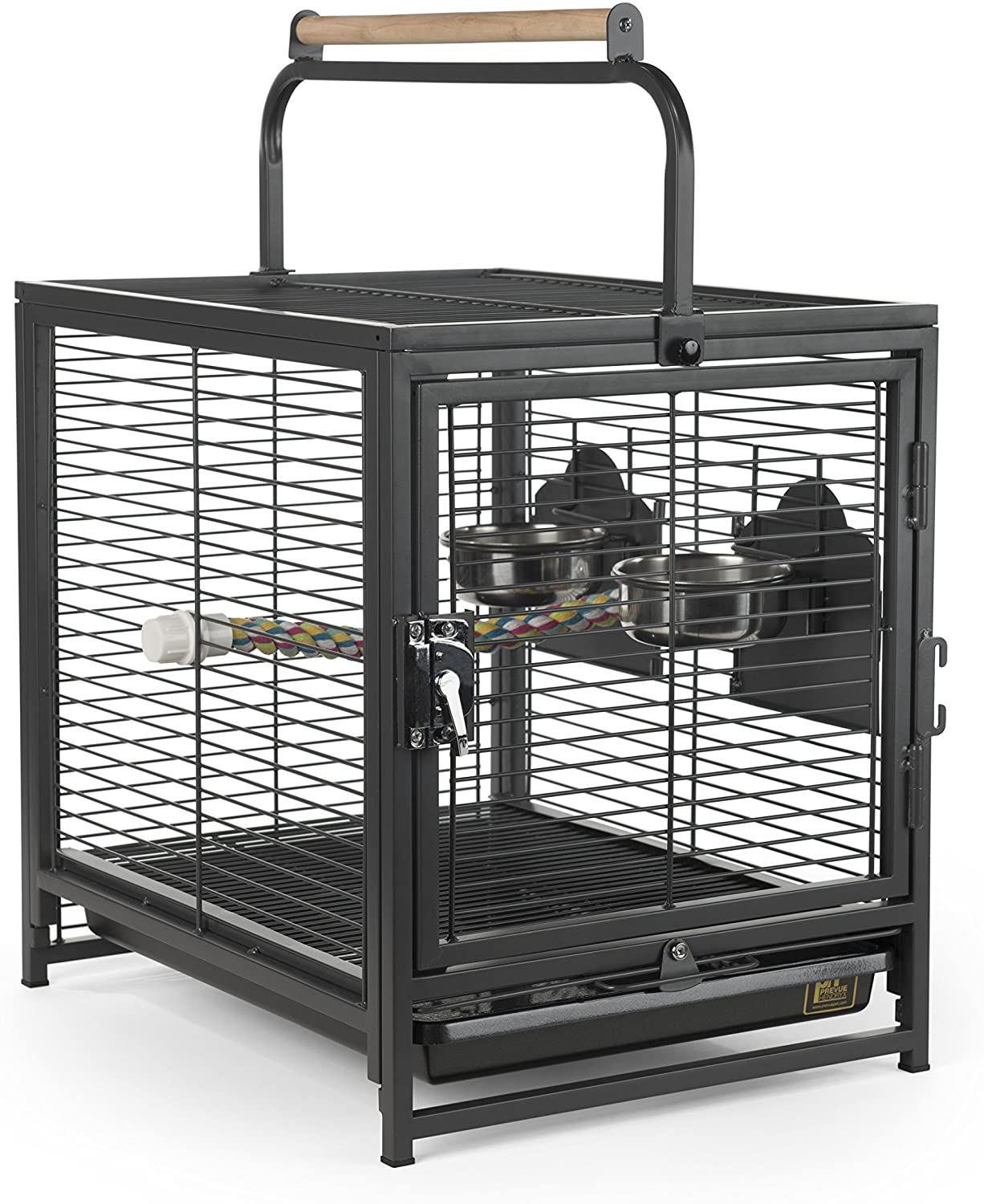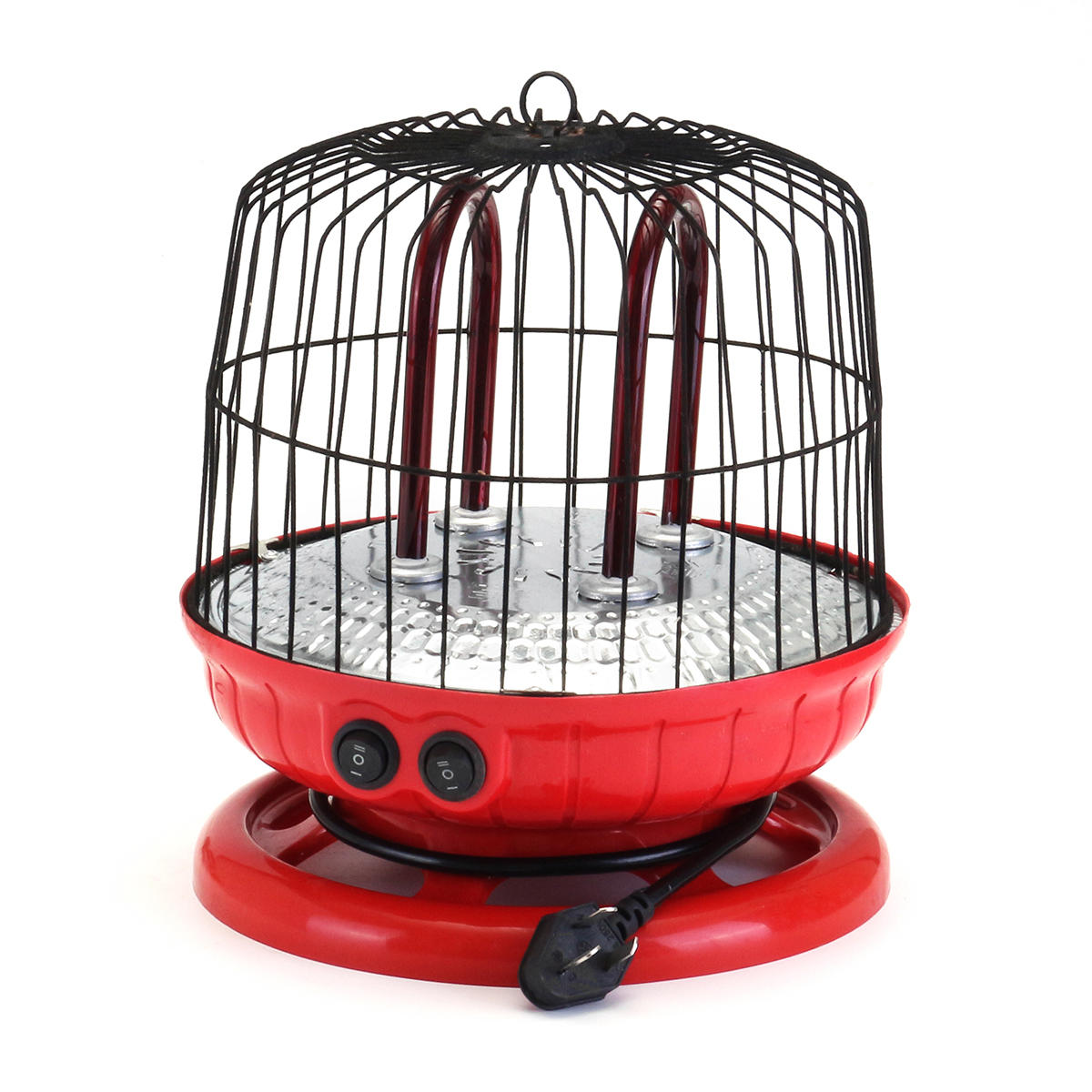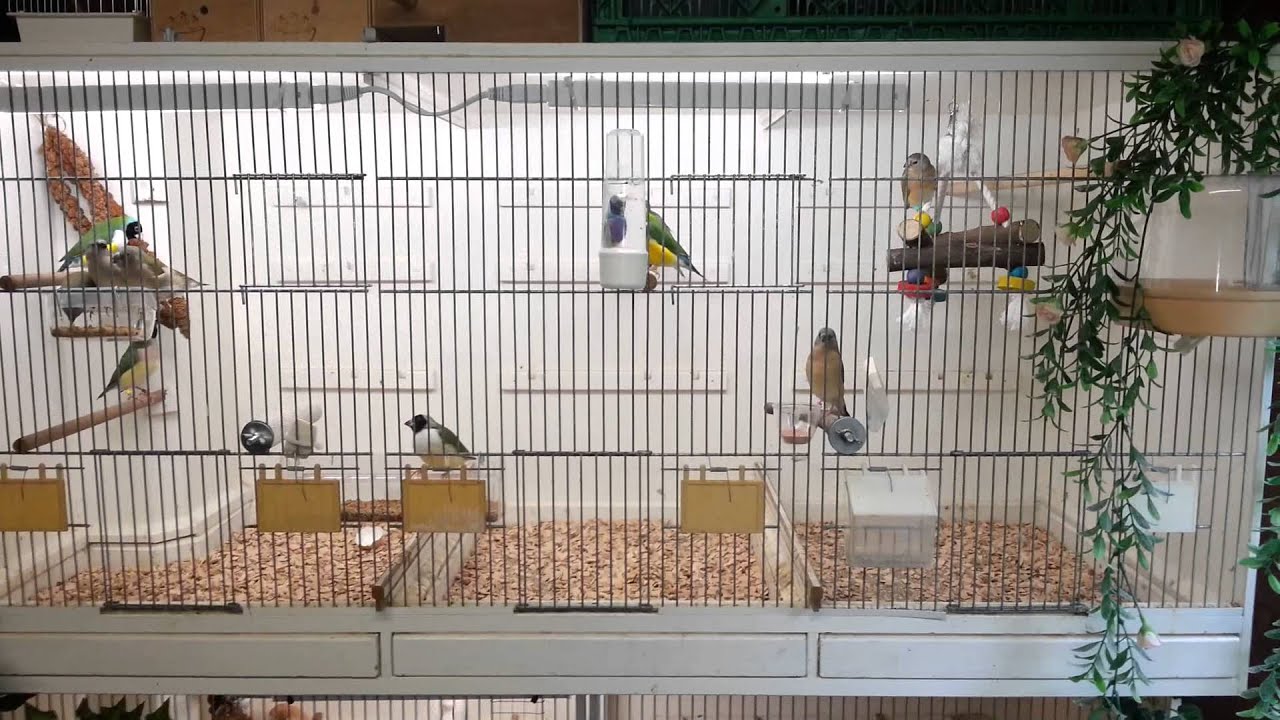Maroon-bellied conures (Pyrrhura frontalis) are small new world parrots found in South America. They are popular as pets because of their personality and quiet disposition, making them ideal apartment birds. They are also an excellent choice for first-time owners.
Quick Information |
|
| Also known as | Brown-eared conure, maroon-bellied parakeet, reddish-bellied parakeet, reddish-bellied conure, scaly-breasted conure, Perruche à bandeau (French) |
| Color | Mostly green, scaly yellow-green breast, and neck, brown ear patch, maroon undertail and belly, black beak, blue and green wings
No sexual dimorphism, both genders look the same |
| Size | 9-10 in (25-28 cm) |
| Weight | 2.5-3.3 oz (72-94 g) |
| Subspecies |
|
| Distribution | Southeastern Brazil through Northeastern Argentina, including Paraguay and Uruguay |
| Habitat | Forest edges, woodlands, and highlands at heights of up to 4,600 ft (1,400 m) |
| Diet | Fruits, flowers, and other plant parts |
| Breeding age | 2 years |
| Clutch size | 4-6 eggs |
| Incubation period | 22-28 days |
| Fledging | 6-8 weeks |
| Lifespan | 25-30 years |
| IUCN conservation status | Least Concern |
| Temperament as pets | Friendly, intelligent, active |
| Maintenance level | Requires high level of interaction with the owner |
| Noise level | Moderate |
| Talking ability | Fair |
Mutations
Fallow and lutino are two mutations of the maroon-bellied conure.
As pets
Housing
Put your pet maroon-bellied conure in a spacious cage, with dimensions of at least 20x20x36 inches. Being as active as these birds are, they would require enough room to move around freely within the cage. Put in some toys in there as well for enrichment. Provide a few perches within the cage, preferably of differing sizes and shapes. Let your pet out of the cage for a few hours every day.
Temperature
They usually thrive at temperatures between 65°F and 80°F.
Personality
They require a lot of attention from their owners, and if not provided adequately, they can become depressed and resort to self-destructive behavior. However, they also do well with toys and keep themselves busy for hours on end playing. When it hankers for your attention, it will jump and hop around you to make you notice it. They also like it when you cuddle with them so don’t be miserly on that front. They are usually not very good at talking but can learn to communicate with you with the help of a few chirps, designed to say, ‘thank you’, ‘feed me’, etc. The best thing about having this bird as a pet is that they usually form a bond with all the members of a family.
Feeding
They are rather open about trying out new foods. They can adapt to a pellet diet without too much fuss. You can feed your maroon-bellied conure fruits, seeds, nuts, vegetables. They also like to eat shredded meat, pasta, peanut butter, hard-boiled egg and bean sprouts.
Remember to feed it pellets varying in size and shape, as they find it to be more interesting to eat than plain pellets. Give it a cuttlebone for calcium. Also remember to avoid giving it foods rich in Vitamin K, as it is believed to cause a disease known as conure bleeding syndrome.
Avocado and chocolate are also a strict no-no for your bird.
Care
Maroon-bellied conures love to bathe and do so in the wild by spreading their wings to catch raindrops. In your care, bathe it with a mist spray every day to keep the feathers healthy and glossy. Clip the wings so that it doesn’t accidentally fly away through an open window. The nails need to be clipped too from time to time. Provide it with a mineral block to chew on, as this will keep the growth of the beak in check.
Clean the cage regularly and replace the food and water dishes daily.
Health problems
Maroon-bellied conures tend to suffer from conure bleeding syndrome, aspergillosis, psittacosis, Pacheco’s disease, psittacine beak and feather disease and proventricular dilation disease.
Price
They cost between $125 and $250.
Interesting Fact
- These conures are often mistaken for their green-cheeked cousins as they are very similar in looks and personality.
Maroon-Bellied Conure Video
References:



